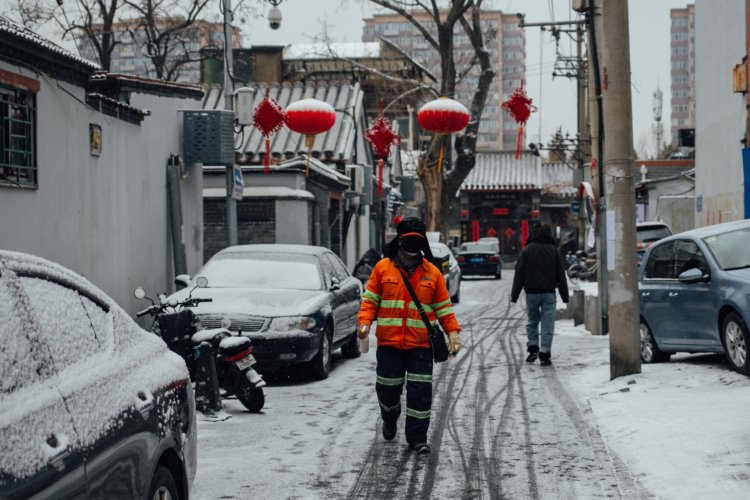Review and Pics: Liu Bolin’s Hiding in the City at Galerie Paris-Beijing
Liu Bolin gets a lot of attention for someone you can’t see. His photos of himself painted to blend into dozens of backgrounds all over the world have gone viral with the aid of the internet, yet there are always the haters who claim his work isn’t art. We checked out his latest exhibit at Galerie Paris-Beijing to tease out what’s hiding in his works.
Stand back and glimpse these photos hanging on the wall and you might take them for your average landscape shots from last summer’s Beijing trip: Great wall, Forbidden City. Shrug.
But look again, and you’ll notice something’s not quite right. There’s a disturbance in the image, kinda like in the first Harry Potter movie, when they were still working out how to do the graphics for the Invisibility Cloak.
Liu began making his “invisible” pieces as a silent personal statement about relations between Chinese citizens and the government when his studio was shut down in 2005. But now, as things have continued to develop in China’s art world, his actions have grown more complex.
He blends into a French bank vault. He blends into telephone booths and museums in the UK. He blends into the American flag. He blends into bookshelves and magazine racks. He blends into Beijing’s most famous landmarks, including posters of the Fuwa from the Olympics. He blends into icons of war, peace, consumerism and the environment. (For photos of these and more, click here, here, here and here.) It’s easy to scoff and say he’s just being gimmicky, and sure maybe his little visual illusions catch the eye and nothing further, but while he’s got your attention, let’s discuss.
I for one am captured by his work because its message, like his visage, is so well camouflaged. Does his present absence in front of a pile of coal express his complicity in the desecration of the environment? Or does it reflect the way industry and relentless development trump humanity? When he’s camouflaged amidst a smattering of magazines in Paris, is he triumphantly announcing his (or China’s) cosmopolitan coming of age? Or is his individuality being suppressed by global consumption?
We won’t discuss the possible embedded meanings when he’s standing in front of a Chinese poster about the power of voting, but we can point out that his impressive rendering of the nine dragons at Beihai park carries a sense of pride and cultural celebration.
Speaking of these dragons, seeing his prints up close allows greater appreciation for the level of detail that goes into camouflaging him in every situation.
There’s a performance aspect to it, too. His work is also currently showing at Eli Klein in New York, and this week he's been working on three new pieces backdropped by: a magazine rack, a graffiti mural by Brooklyn-based artist Kenny Scharf and Ground Zero. All of the painting and photography procedures were (or will be) open to public viewing, and he’ll release the new prints this fall.
This time at Galerie Paris-Beijing, Liu’s sculptures are also on view. I find them quite a bit less interesting than his photos, but their brightly enameled aesthetics do ground him in a CAFA-trained, cheaply marketable Chinese contemporary art context. Perfect for "further complicating the messages behind his performance photography." (Trying to sound like an art history nerd here. How'd I do?)
While you have the chance, I highly recommend you take a moment to admire Liu’s work close up. Just don’t sneeze or sweat on them. Each print sells for roughly eight to ten thousand dollars. That's US. Apparently invisibility doesn’t come cheap.






